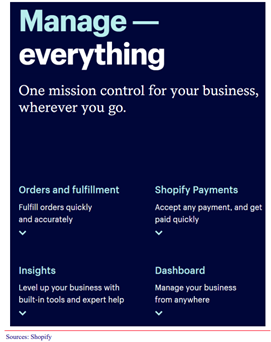
Notes on the Stephen Mandel interview. Mandel is the founder & managing partner of Lone Pine Capital, a Tiger cub.
h/t locked account
reddit.com/r/GrowthStocks…
h/t locked account
reddit.com/r/GrowthStocks…
Steve went to Darmouth & then HBS. His career started off at Goldman as a retail analyst. He then went to Julian Robertson’s Tiger Global, for 7 years. He left to start Lone Pine. 1$ in the S&P when he started (1997) is worth 6$ today. 1$ in Lone Pine in 1997 is worth 25$ today.
Key things when he’s following a company: spends more time thinking about the people running the business (smarts, ethics, culture setting). He looks at competitive positioning, moat and financials but the people are the most important. There’s 2 things he does: 1) spends a lot
of time with the CEO and senior management group. 2) check them out through their networks and people they know (ex: former colleagues). Lone Pine has professionals whose goal is just to get connections. Lone Pine tries to be a resource for management (ex: if Lone knows a lot
about competitors or potential hires, as an intellectual peer, it changes the nature of the dialogue with management). In general, they hold for long.
They’re not activists, but ‘suggestivists’, by engaging in dialogue with management teams to unlock value. As an
They’re not activists, but ‘suggestivists’, by engaging in dialogue with management teams to unlock value. As an
analyst at Goldman, he looked up to Sam Walton at Walmart, who had a great facility with people. Every Walmart store would send 3 associates to Walmart’s annual meeting. At 5AM, Sam would get up on stage, and engage with these individuals from stores and recall
experiences with them. Steve also looked up to Jim Sinegal at Costco.
Companies w/ good business models but bad management: Greenmountain Coffee & Lululemon. He sold too early in both cases and management got replaced and started realizing the intrinsic value of the companies.
Companies w/ good business models but bad management: Greenmountain Coffee & Lululemon. He sold too early in both cases and management got replaced and started realizing the intrinsic value of the companies.
There’s been progress in several sectors, include digital payments. Cash and checks moving to digital payments are accelerating very quickly, around the world, consumer and B2B too. A lot of the historically unbanked population are also entering the digital system.
The software space saw a move from physical, on-premise software to SaaS models, where software is in the cloud and that affects the economics of the business and can also innovate faster. A third area is digital consumerism (e-commerce, communication, gaming, video consumption).
A fourth area would be biotech (targeted therapies, personalized medicines, & the intersection between software and biotech).
Steve thinks 10 years from now that personalized medicine will be standard and that individual genetic profile will determine pre-disposed diseases.
Steve thinks 10 years from now that personalized medicine will be standard and that individual genetic profile will determine pre-disposed diseases.
Pre-emptive interventions could stop such diseases.
They manage 30B$ and the majority of capital is long. They went from a staff of 17 to 95 now. Steve has sat on every person’s review for 22 years. He tries to instill a culture where front and back office people are equal
They manage 30B$ and the majority of capital is long. They went from a staff of 17 to 95 now. Steve has sat on every person’s review for 22 years. He tries to instill a culture where front and back office people are equal
and not 2 class of citizens. Every employee is a board member and 100% of them contributed to Lone Pine’s philanthropic endeavors.
Similarity between picking a great company & a non-profit: great leadership. But outcomes are more difficult to judge & measure with charities.
Similarity between picking a great company & a non-profit: great leadership. But outcomes are more difficult to judge & measure with charities.
Books that made an impression on Steve were biographies of folks who overcame great odds to achieve great things (ex: Walton & Abe Lincoln).
There are elements of 1999 today which may even have benefited Lone Pine. The bubble ends when the Fed stops the party.
There are elements of 1999 today which may even have benefited Lone Pine. The bubble ends when the Fed stops the party.
The dot-com bubble lasted 27 months, from September 1998 and ended in March 2000. The current market will burn out too. Options contracts is double what it was a year ago (22M vs 11M), so there are aspects of a bubble. The big difference is that the companies are real. In
1999-2000, most of the companies shouldn’t have existed in the first place, like many EV companies today.
They used to invest a lot in wireless and retail 10+ years ago. Now wireless is a commodity and companies are price takers (what will be perceived as commodity in 10 yrs?)
They used to invest a lot in wireless and retail 10+ years ago. Now wireless is a commodity and companies are price takers (what will be perceived as commodity in 10 yrs?)
GE failed because of 3 issues: 1) Jack Welch set a culture where it was very difficult to get people to admit something was wrong. 2) There were accounting issues allowing to beat quarterly earnings which bit them 30 years later. 3) ill-timed acquisitions
• • •
Missing some Tweet in this thread? You can try to
force a refresh





